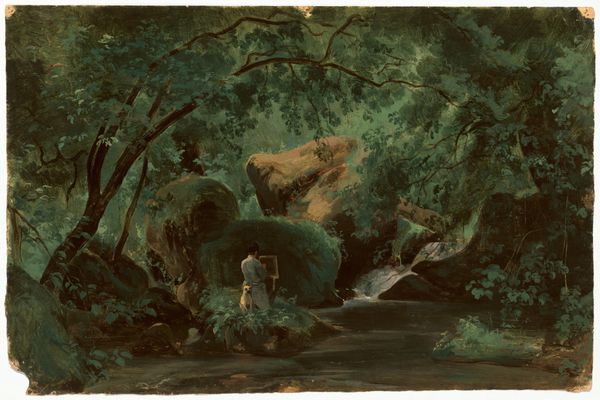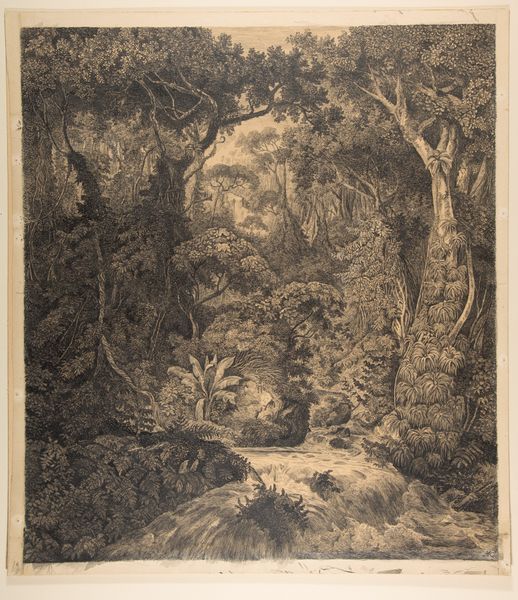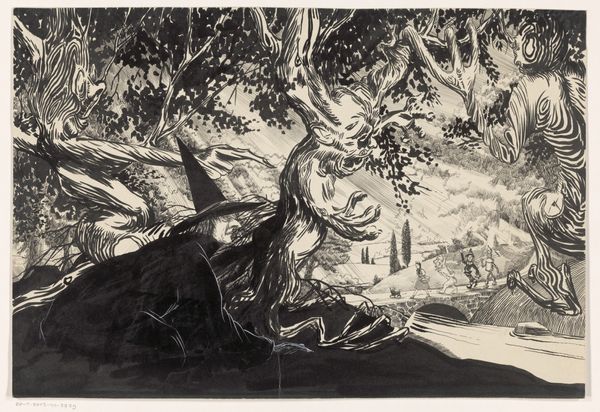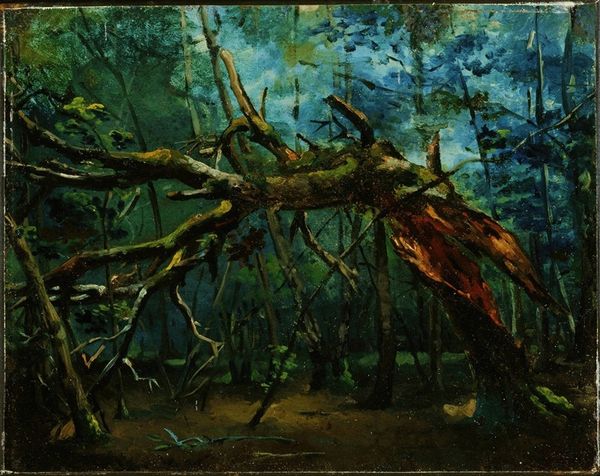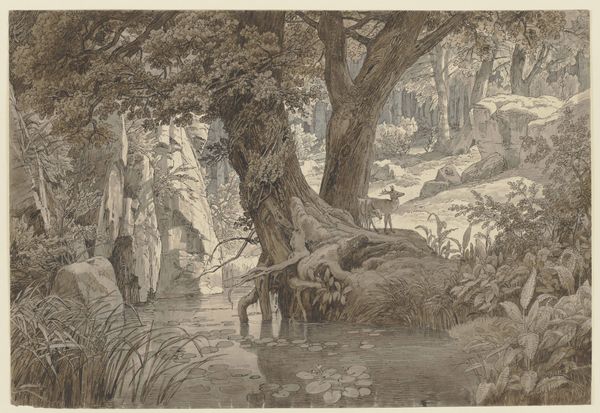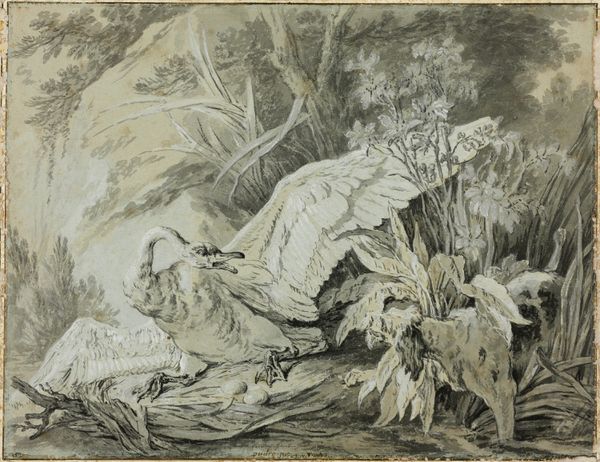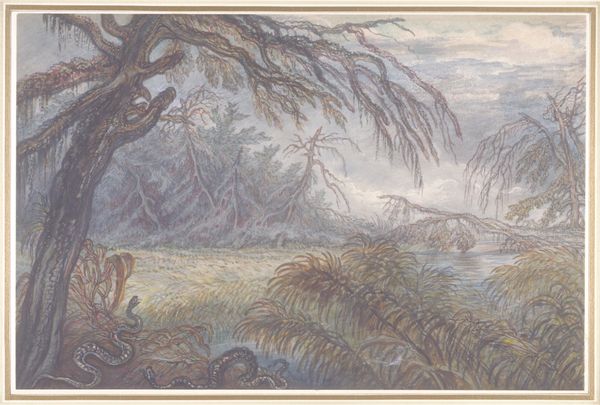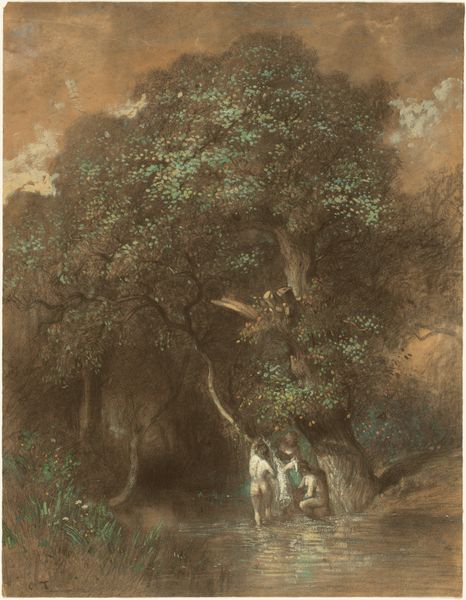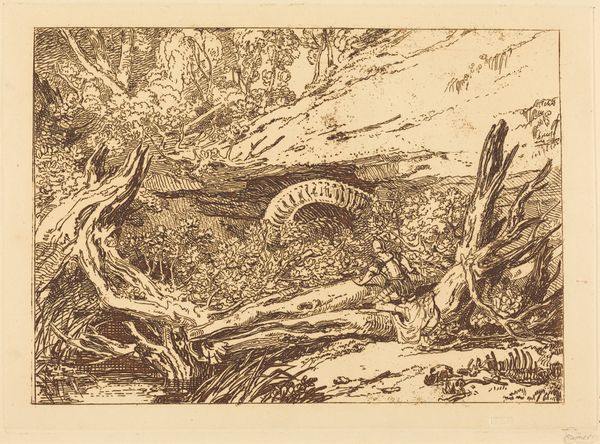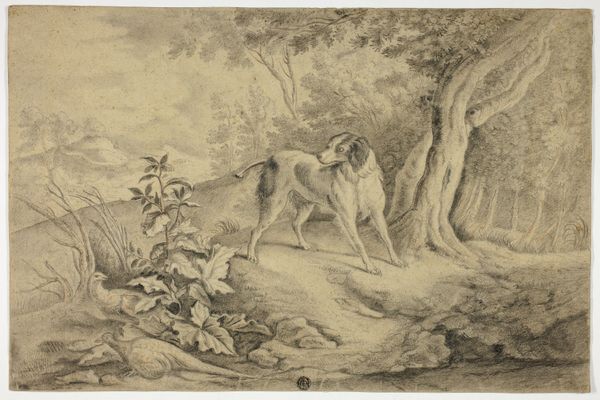
painting, plein-air, oil-paint
#
painting
#
plein-air
#
oil-paint
#
landscape
#
romanticism
#
realism
Dimensions: overall: 29.5 x 44.5 cm (11 5/8 x 17 1/2 in.) framed: 42.6 x 57.5 x 5.6 cm (16 3/4 x 22 5/8 x 2 3/16 in.)
Copyright: National Gallery of Art: CC0 1.0
Editor: This is André Giroux’s *Forest Interior with a Waterfall, Papigno,* painted between 1825 and 1830 using oil paint. It feels… overwhelmingly green. What can we make of such an intimate, detailed scene? Curator: I see it as a potent engagement with Romanticism’s emphasis on the power of nature, yet subtly interrogating ideas of nationhood and control. It seems initially straightforward, right? Beautiful scenery. But let's ask: what is Giroux doing by focusing on this very specific locale, Papigno, at a particular time? And for whom? Editor: I suppose painting “en plein air” connects with accessibility… or, is there another layer here? Curator: Exactly. This connects to the democratization of art, and a developing middle-class art market with more buying power. The accessibility masks a more complex relationship. Think about the rise of landscape painting alongside expanding industrialization. Does celebrating untamed nature reinforce the viewers’ perception of it as somehow "other" and thus something they are separate from or are able to tame? Is this depiction of "nature" at odds with their rapidly changing landscapes back in the city? Editor: So the very act of painting this landscape involves social and political ideas? I was too caught up in the visual qualities. Curator: Absolutely! What’s at stake is recognizing these historical works as actively participating in dialogues about land, ownership, and control, anxieties around social upheaval, and more! Giroux doesn't just passively reflect nature; he's consciously framing it. Editor: That adds a whole new layer. I'll definitely look at landscapes differently now. Curator: Good! Keep asking yourself, who benefits from this version of the story? How does it connect to their historical reality, and even ours?
Comments
No comments
Be the first to comment and join the conversation on the ultimate creative platform.
